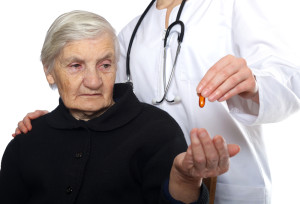Dysthymic disorder is a mood disorder, which would be located between feeling normal and feeling depressed.
Studies in the sleep laboratory have shown that about 25% to 50% of patients with dysthymic disorder show the characteristic changes of REM sleep found in major depressive disorder patients. Also, it is clear from long-term follow up studies of dysthymic disorder patients that a significant percentage of patients do go on to develop recurrent depressive episodes.
Symptoms of Dysthymic Disorder
The person affected with it is in a chronically depressed mood, which would be present for at least 2 years in adults and 1 year in children or teenagers (see Ref. 2 for details). The mood is “down in the dumps” or sad the majority of time. In children this could express itself more like being irritable.
On top of this there have to be two or more of the following symptoms: problems falling asleep(insomnia) or sleeping too much(hypersomnia); overeating or lacking appetite; low self esteem; difficulties making decisions or concentrating; chronic low energy or fatigue. Unfortunately the patients who feel this way and who qualify for the diagnosis “dysthymic disorder” have become used so much to their symptoms that they often become their own worst enemies and do not report their symptoms to anyone.
They carry these negative feelings with them and simply accept that “they are stupid” or “that’s the way they are”.
Treatment
Cognitive and behavioral therapy and antidepressant medication
for depressive episodes, if it develops into this.
In the last case, this would then be termed a recurrent depressive disorder. Often people who develop depression out of the dysthymic background may need a small dose of maintenance antidepressant medication, as they would tend to not return to a normal mood between depressive episodes, but return to the dysthymic disorder mood that they are used to. With proper follow up these patients will do well.
References:
1. Dr. David Burns: “Feeling good –The new mood therapy”, Avon Books, New York,1992.
2. Diagnostic and Statistical Manual of Mental Disorders, Fourth Edition, (DSM-IV),American Psychiatric Association, Washington,DC,1994.
3. Dr. Shaila Misri at the 46th St. Paul’s Hosp. Cont. Educ. Conference, November 2000, Vancouver/B.C./ Canada.
4. JM Loftis et al. J Neurochem 2000 Nov 75(5): 2040-2050.
5. B. Zilbergeld et al. “Hypnosis – Questions& Answers”, W.W. Norton & Co, New York,1986: 307-312.
6. MH Erickson & EL Rossi:”Hypnotherapy, an exploratory casebook”, Irvington Publishers Inc., New York, 1979: chapter 8, 314-363.
7. G Steketee et al. Compr Psychiatry 2001 Jan 42(1): 76-86.
8. DS Mennin et al. J Anxiety Disord 2000 July-Aug 14(4): 325- 343.
9. J Hartland: “Medical &Dental Hypnosis and its Clinical Applications”, 2nd edition, Bailliere Tindall,London,1982, page: 326-336.







